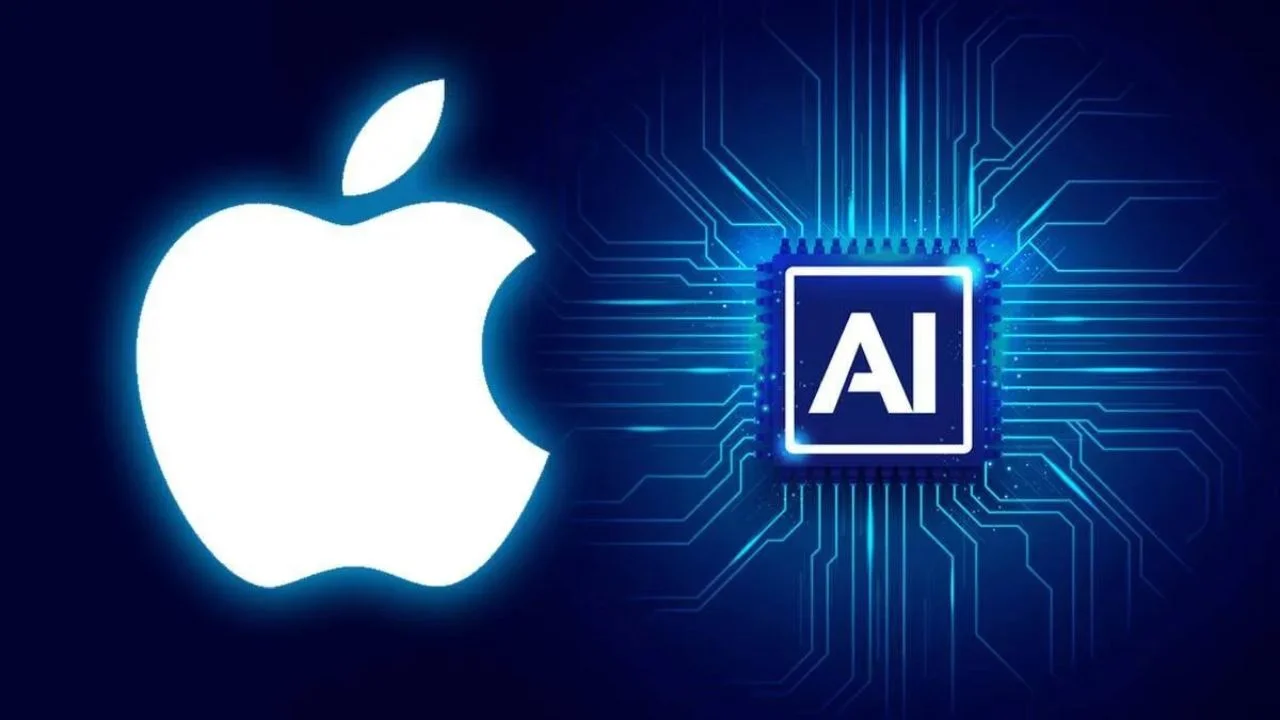
Apple’s latest innovation, Depth Pro, is set to transform how machines perceive depth, marking a significant breakthrough in artificial intelligence (AI) and its applications across multiple industries. From augmented reality (AR) to autonomous vehicles, e-commerce, and beyond, Depth Pro’s speed and precision are rewriting the rules of 3D vision technology.
This AI model, developed by Apple’s advanced research team, pushes the boundaries of monocular depth estimation, a method that derives 3D depth information from a single 2D image. Traditionally, depth estimation required camera-specific data or multiple images. Depth Pro, however, challenges this norm, bringing a new level of efficiency that could reshape the future of spatial awareness and digital interaction.
Apple’s move to revolutionize depth perception with AI is timely. As industries race to enhance user experiences and improve the efficiency of AI-driven systems, Depth Pro positions itself as a tool that can scale, adapt, and innovate across various sectors.
For years, generating accurate depth maps from 2D images has been a daunting challenge. Most systems require multiple image inputs or intricate camera data such as focal lengths to gauge depth effectively. This dependence on metadata slows down processes and limits versatility.
Apple’s Depth Pro changes this paradigm entirely. It generates high-resolution 3D depth maps from a single image in as little as 0.3 seconds—an astonishing feat in AI development. The model can create sharp, detailed depth maps up to 2.25 megapixels, all without needing the metadata that most systems rely on.
This innovation is made possible by an advanced multi-scale vision transformer. This architecture processes both the larger context of an image and its finer details simultaneously, setting Depth Pro apart from traditional models that struggle with speed and precision. Depth Pro’s ability to capture minute details, such as strands of hair or small elements like vegetation, offers a level of sharpness previously unattainable in depth estimation models.
The technology bypasses the bottleneck of metadata, opening up more flexible and scalable use cases. This makes it particularly promising for industries that require real-time 3D mapping, such as autonomous driving, e-commerce, and augmented reality.
What truly sets Depth Pro apart from its predecessors is its capacity to estimate both relative and absolute depth—a feature referred to as metric depth. This means the model can produce real-world measurements with pinpoint accuracy. This is crucial in AR applications, where virtual objects must align perfectly within physical environments to offer immersive experiences.
For instance, imagine pointing your phone’s camera at a room and having the Depth Pro AI instantly provide precise depth measurements to ensure virtual furniture fits seamlessly in the space. No additional hardware. No time-consuming setup. This ability alone makes Depth Pro a game-changer in consumer experiences.
Even more impressive is its reliance on zero-shot learning. Traditional AI models often require extensive training on specific datasets before they can make accurate predictions. Depth Pro, however, does not need domain-specific training data. This enables it to function across various environments and image types, delivering accurate depth predictions regardless of the camera or dataset used.
As the research team notes in their paper, “Depth Pro produces metric depth maps with absolute scale on arbitrary images ‘in the wild’ without requiring metadata such as camera intrinsics.” This flexibility dramatically expands its real-world applications.
Whether it’s used in e-commerce, automated vehicles, or AR, Depth Pro’s zero-shot learning capability ensures it can adapt and perform without extensive retraining—a significant time and cost-saving advantage for businesses.
What truly sets Depth Pro apart from its predecessors is its capacity to estimate both relative and absolute depth—a feature referred to as metric depth. This means the model can produce real-world measurements with pinpoint accuracy. This is crucial in AR applications, where virtual objects must align perfectly within physical environments to offer immersive experiences.
For instance, imagine pointing your phone’s camera at a room and having the Depth Pro AI instantly provide precise depth measurements to ensure virtual furniture fits seamlessly in the space. No additional hardware. No time-consuming setup. This ability alone makes Depth Pro a game-changer in consumer experiences.
Even more impressive is its reliance on zero-shot learning. Traditional AI models often require extensive training on specific datasets before they can make accurate predictions. Depth Pro, however, does not need domain-specific training data. This enables it to function across various environments and image types, delivering accurate depth predictions regardless of the camera or dataset used.
As the research team notes in their paper, “Depth Pro produces metric depth maps with absolute scale on arbitrary images ‘in the wild’ without requiring metadata such as camera intrinsics.” This flexibility dramatically expands its real-world applications.
Whether it’s used in e-commerce, automated vehicles, or AR, Depth Pro’s zero-shot learning capability ensures it can adapt and perform without extensive retraining—a significant time and cost-saving advantage for businesses.
Depth Pro’s potential is vast, with numerous industries poised to benefit from this breakthrough. One of the most promising areas is e-commerce. Depth Pro could enable consumers to use their smartphone’s camera to visualize how furniture or other items fit within their homes. Shoppers could instantly see how products look and fit in their space, bringing a virtual shopping experience closer to reality.
Similarly, in the automotive industry, Depth Pro could enhance autonomous vehicles’ ability to perceive and navigate their surroundings. Depth Pro’s high-resolution, real-time depth maps could vastly improve how self-driving cars understand and interact with their environment, offering safer, more accurate navigation.
The researchers emphasize that Depth Pro produces metric depth maps that accurately capture object shapes, scene layouts, and absolute scales. This precision is key for sectors where spatial awareness is crucial, from automotive safety to industrial automation.
The ability to generate real-time 3D maps from a single image could also reduce costs associated with training traditional AI systems, making it an invaluable tool for businesses looking to integrate AI-driven depth perception.
Depth estimation isn’t without its challenges. One of the most persistent issues is dealing with flying pixels—errant pixels that appear to float in mid-air due to errors in depth mapping. These errors compromise the accuracy of depth models and limit their practical applications.
Depth Pro addresses this issue head-on, providing a solution that significantly reduces flying pixel errors. This improvement makes it particularly valuable for industries such as 3D reconstruction, virtual environments, and medical imaging, where accuracy is paramount.
Another area where Depth Pro excels is in boundary tracing—the ability to sharply delineate objects and their edges. Traditional depth estimation models struggle to accurately capture fine boundaries, particularly when dealing with complex shapes like hair, fur, or small plant structures. Depth Pro, however, surpasses earlier models in boundary accuracy, offering a precision that’s crucial for industries that rely on object segmentation, such as image matting or medical diagnostics.
In a bold move to foster collaboration and accelerate innovation, Apple has made Depth Pro open-source. The code, along with pre-trained model weights, is now available on GitHub, allowing developers, researchers, and companies to explore and refine the technology. This open-source release has the potential to rapidly scale Depth Pro’s adoption across various sectors.
Developers can experiment with the model, tweaking it for specific use cases ranging from robotics to manufacturing. Apple’s decision to make Depth Pro open-source underscores its commitment to advancing the AI community and empowering innovation across fields.
The research team actively encourages further exploration of Depth Pro’s capabilities, highlighting its potential in fields such as robotics, healthcare, and manufacturing. The open-source code repository includes everything from the model’s architecture to pre-trained checkpoints, ensuring that the AI community has the tools needed to build on Apple’s groundbreaking work.
Depth Pro sets a new standard for speed, accuracy, and flexibility in monocular depth estimation. Its ability to produce high-quality, real-time depth maps from a single image holds incredible potential for industries that rely on 3D spatial awareness.
Imagine the future of augmented reality, where Depth Pro enables users to interact with virtual objects that seamlessly blend into the real world. Or think about autonomous vehicles navigating more safely and efficiently due to the real-time depth mapping capabilities of Depth Pro. Even in e-commerce, where shoppers can visualize products with unprecedented accuracy, Depth Pro will reshape how we experience virtual interactions.
As AI continues to evolve, Depth Pro showcases how cutting-edge research can be transformed into practical solutions for real-world problems. This model highlights the exciting possibilities for AI’s role in enhancing decision-making, automation, and consumer experiences.
The open-source release of Depth Pro is just the beginning. As developers and researchers continue to explore its potential, we can expect to see new, innovative applications emerge across industries. Whether it’s improving robotic vision, enhancing medical imaging, or transforming 3D modeling, Depth Pro’s capabilities are poised to have far-reaching impacts.
Apple’s Depth Pro represents a monumental leap forward in AI-driven depth estimation. With its unprecedented speed, accuracy, and ability to operate without metadata, Depth Pro is set to redefine how industries approach 3D vision technology.
From augmented reality to autonomous driving, Depth Pro’s applications are broad and varied. The model’s open-source release ensures that innovation will continue, as developers and businesses build on Apple’s groundbreaking work.
As we look toward the future, Depth Pro promises to reshape how machines perceive and interact with the world. This new standard in 3D depth estimation could soon become the foundation for advancements in robotics, e-commerce, and beyond, ushering in a new era of AI-driven innovation.
Subscribe and get 3 of our most templates and see the difference they make in your productivity.
Includes: Task Manager, Goal Tracker & AI Prompt Starter Pack
We respect your privacy. No spam, unsubscribe anytime.

AI tool that improves writing with smart paraphrasing, grammar checks & image generation.

Build full-stack, production-ready software using plain-language prompts—no coding needed.

AI tool organizes your inbox by automatically sorting emails and reducing clutter.